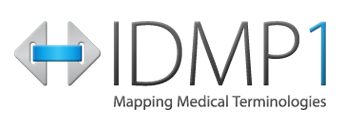Periodic Adverse Drug Experience Report PADER
Post-approval cumulative reports of safety include Periodic Adverse Drug Experience Reports (PADERs) in the U.S. and Periodic Safety Update
Reports (PSUR) in many other regions, including in Europe. Their purpose is to update and evaluate the worldwide safety experience with a medicine
at defined time points after approval. Generally speaking, the Periodic Adverse Drug Experience Report PADER provide succinct summary information together with an evaluation of the benefit-risk profile of approved medicines in the light of new or changing post-approval information. This evaluation is designed to help ascertain whether further investigations are necessary and whether changes should be made to the approval or to the medicine’s labeling. In summary, the aim of cumulative reports of safety is to:
- Report all the relevant new information from appropriate sources
- Relate these data to patient exposure to the medicine
- Summarize the medicine’s approval status in different countries and any significant variations related to safety
- Create periodically the opportunity for an overall reevaluation of safety
- Indicate whether changes should be made to an approved medicine’s label in order to optimize the use of the product
FDA has started accepting PADER/PAER Submission in eCTD Format from June 10, 2015.
Electronic Format of the Periodic Adverse Drug Experience Report PADER
FDA requires Industries to submit Periodic Adverse Drug Experience Report PADER in electronic format
The descriptive information portion of the PADER should be submitted as a PDF file to section 5.3.6 of the Electronic Common Technical Document (eCTD)
PADER is a single pdf file with proper bookmarks, Table of Contents and hyperlinking Submission in Electronic Format for Post Marketing Safety Reports, applies to all post marketing safety report for human drug and biologic products, includes individual case safety reports(ICSRs) and periodic safety reports.
PSUR Repository
Planning and preparation of the PSUR
The use of the PSUR Repository has become mandatory in the European Union on 13 June 2016. The PSUR repository is a single, central platform for PSURs and related documents to be used by all regulatory authorities and pharmaceutical companies in the EU.
EMA´s Introductory cover note to the PSUR submission defines the procedure and how PSURs should be prepared and submitted for medicinal products in Europe.
Information important for the submission of the PSUR
For more details on the submission process please refer to the page Periodic safety update reports: questions and answers in the EMA Website.
List of Union reference dates and frequency of submission of periodic safety update reports (PSURs)
The PSUR list is updated on a monthly basis and any changes in the EURD list, such as the PSUR submission frequencies, the dates of submission and the PSUR submission requirement for medicinal products referred to in Articles 10(1), 10a, 14 or 16a of Directive 2001/83/EC come into force 6 months after its publication.
Procedural Timetables of PSUR
This EMA page procedural timetables lists the timetables for the submission, start and finish dates of procedures, as well as other interim dates and milestones that occur during the various procedures.
Timetables are categorised according to the type of procedure (e.g. full applications, extensions and variations, as well as response timetables).
The dates for submission, start of the procedure and plenary meetings of the Committee for Medicinal Products for Human Use (CHMP), the Pharmacovigilance Risk Assessment Committee (PRAC) and the Committee for Advanced Therapies (CAT) are generally fixed, but the other dates may be subject to adjustment until the CHMP reaches the adoption of the final opinion for the individual application.
At the start of the procedure, the Agency will notify the applicant of the adopted final timetable in writing.
What will you find in this page?
- Initial marketing authorisation and extension applications
- Variations
- Renewals and annual reassessments
- Pharmacovigilance procedures
- Referrals
- Post-authorisation measures
- Advanced therapy medicinal products (ATMPs) procedural timetables
